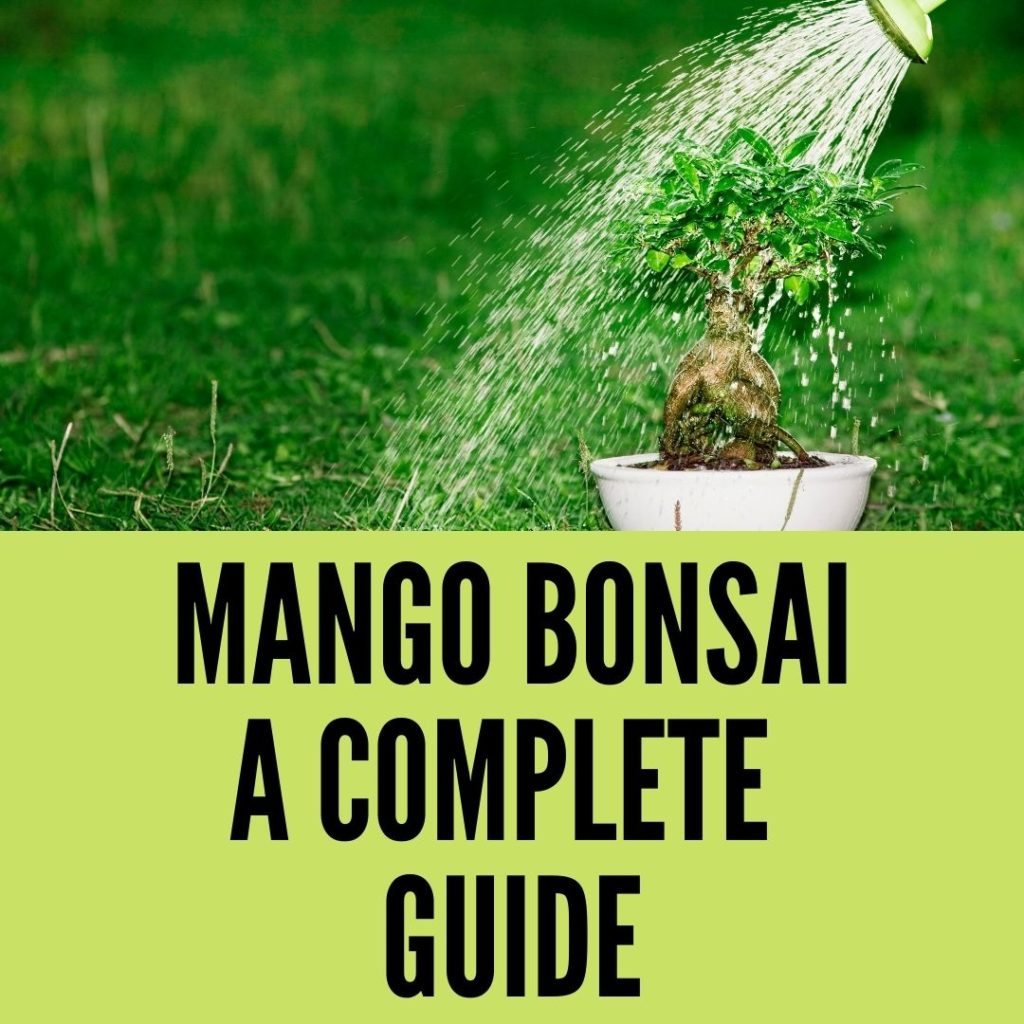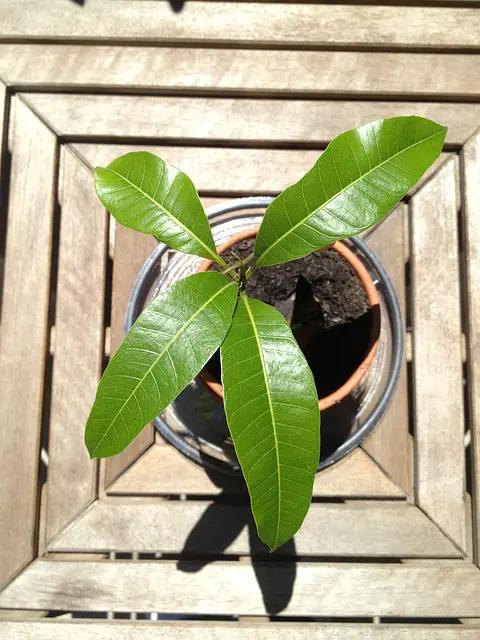Are you in love with bonsai who wants to cultivate a mango bonsai tree but is concerned about the fact that you live in a small, tight space? If this is the case, Bonsai farming may be the greatest solution to your problem. This strategy is based on old Japanese farming traditions.
This method is planting the tree in a small pot with the goal of limiting and restricting the tree’s development and allowing it to grow in a small space. Growing a mango bonsai has always been enjoyable for bonsai enthusiasts since they can see the succulent, fresh, colorful, aroma-filled fruits grow in front of their eyes, giving them a sense of satisfaction and pleasure. This technique has made our task more facile and it’s super convenient to grow a mango tree in a container or a pot.
Family and origins
Mango, which belongs to the genus Mangifera and the kingdom Plantae, is a particularly sour and delectable fruit. Mango is a flowering plant that belongs to the Anacardiaceae family. Mango is thought to have originated in the region straddling northwestern Myanmar, Bangladesh, and India. Mangifera Indica is another name for them.
According to the Indian National Horticultural Board, the subcontinent has over 1500 different varieties of mangoes. Today, we can clearly see the rapid expansion of bonsai cultivation from parks and gardens to the home, not only for cultivation but also to enhance the decor.

Growing a Mango Bonsai
Growing a mango bonsai from a seedling includes the following steps
The optimal time to plant a mango tree is in the spring. It can also be done near the end of the summer or the beginning of the rainy season, when the soil is still damp and moist, making it ideal for germination.
- 1st step:
To ensure the tree’s speedy and healthy growth, start by filling a tub with very nutritious soil that has been treated with balanced fertilizers.
- 2nd step:
Then, just an inch below the soil surface, place the rinsed seed and cover it with earth.
- 3rd step:
After that, you should keep the tub in a warm, comfortable location because it will aid in the tree’s growth. It must be watered on a daily basis. It could take 3-4 weeks for it to germinate and spread out of the soil.
- 4th Step:
The tree will reach full size in about 6 to 7 months. It will grow erect and develop its branches and leaves in a straight line on its body.
- 5th Step:
By the end of the year, the tree will be root bound. After that, you must refill the dirt. The tree’s branches need to be pruned for better branching, which will eventually lead to fruit development.
Vessel for growing mango bonsai
When choosing a tub for a mango bonsai, make sure it is wide enough to gather nourishment from the tree’s roots and wide enough to feed it to the tree. When choosing a pot, you must use extreme caution. Mangoes thrive with finer discharge, so the tub must have ample holes for drainage. Mango roots require more space for healthy growth, thus we can successfully ensure their effective growth by allowing them to grow in a deep-seated pot.
For inflating a mango bonsai tree’s outside appearance and displaying it in a captivating manner, a decorated and elegant tub is a requirement.
Maintenance of the Climate
Mango, sometimes known as the “King of Fruits,” grows well in warm areas. The optimal climate for growing mango trees is one that is raw and humid. It becomes difficult for them to survive at temperatures below 30 degrees Fahrenheit. In colder climates, a mango tree’s survival becomes extremely tough. If properly cared for and maintained, a mango tree can easily survive for 300 years.
Texture of the soil
The optimal soil for growing a mango tree is one that is rich in nutrients and is enhanced with 40 percent compost, 20 percent pumice, and 40 percent forest floor mulch. Mango planting can also be done with garden soil that has been treated with high-quality nutrients. Your tree will get enough nourishment and will be able to grow healthily and survive for a long period if you use the soil composition specified above.

Fertilizers
It is critical to offer a balanced fertilizer as well as nutritious soil to promote improved development and yields. A well-balanced fertilizer is required to aid in the tree’s growth. It is recommended that you apply good quality potassium and A grade phosphorus fertilizer while reducing the amount of nitrogen because it is beneficial to the tree’s growth.
Mix 1 teaspoon of 12-5-9 fertilizer with 1 gallon of lukewarm water and apply 14 percent of the mixture to the soil. You must water the pot four times in a row for four days until the fertilizer water is soluble in the soil. Steps of breeding a mango bonsai from seedling:
- At first, it is needed to prepare a tub containing highly nutritious soil and also enriched with balanced fertilizers for rapid and healthy growth of the tree.
- Then you need to place the washed seed just an inch below the soil and immediately cover it with soil.
- After that, you need to dwell the tub in a convenient warm place as it will effectively help in the growth of the tree. It has to be watered daily. And it may take 3-4 weeks for its germination and proliferation out of the soil.
- After about 6 to 7 months the tree will gain its full growth. It will grow erect and straightly develop its branches and leaves on its body.
Chemical fertilizers are to be avoided as much as possible. Organic fertilizers work as the best course for the finer growth of mango trees.
Transfer the pot indoors in low temperature
Generally, spring is considered to be the most convenient season for planting mango trees as the weather remains perfect for the growth of the tree. It becomes very difficult for the mango trees under 32 degrees Fahrenheit. Therefore it is recommended to transfer the pot indoors if the temperature falls down.
Grafting Mango trees
Grafted plants can also be used to develop mango bonsai. It’s also a simple technique. As an example:
To begin, fill the container halfway with soil and coarse sand in the same proportions. The seedling is then placed in a soil mixture container. Unless the roots are properly buried, you will need to add dirt to the container. It’s now time to water the bonsai properly so that the water reaches the bonsai’s roots. It will need to be watered on a regular basis for the next 2-3 years. You can stop watering it after it reaches maturity and begins to produce fruit.
Procedure for trimming
To assist the tree’s growth, this phase involves cutting away any dead or overgrown branches or stems. You can reduce the size of unwanted branches by deleting extraneous portions using this method. Though bonsai does not require frequent cropping, undesired sections should be removed as soon as possible; otherwise, fruit development may be hampered or even prevented. As a result, correct trimming is necessary for bonsai growth and development.
Insect and pest control
Mango trees are plagued by fruit flies, scales, spider mites, and other pests. They inhibit the tree’s growth and reduce the amount of fruit it produces. Organic insecticides must be used as soon as possible to manage it.
Mango bugs are also important in preventing mango growth. The mango leaves are eaten by a variety of pests, causing harm to the trees.
Mango plants are susceptible to diseases such as anthracnose, scab, powdery mildew, black rot, and others. Many diseases are caused by temperature fluctuations, as well as changes in lighting, irrigation, and other variables. Organic techniques, such as an organic spray of Neem oil, can help us avoid illnesses.
Grow Ficus Benjamina Bonsai in 7 Easy Steps
Growing mango bonsai in a cold climate
If you want to grow mango bonsai in a freezing or cold climate, select a dark and gloomy color container since they can absorb a lot of heat and humidity. Because the tree requires less moisture, it’s important to make sure there’s still enough space for drainage.
When it’s brutally cold outside, it’s preferable to refill the container indoors. It must be arranged in such a way that it can experience the radiant, shining, and beautiful morning sunbeam as well as gets warmth for its safe development.
Usually, 3-4 months are needed for accumulation after flowering. When the color of the fruit turns bright yellowish, then it becomes suitable for taking. Now it’s finally time for enjoying the lovely and tasty fruit and also for cherishing your efforts and hard work.
Bonus Tips
For better and rapid growth it needs to ensure every detail such as watering the tree timely, pruning, using balanced fertilizers every time. It allows it to grow in the proper light, temperature maintenance, etc. You can expect a successful outcome by ensuring every service is properly handled. This would ultimately result in giving you fruits within 3-5 years of growth.
Conclusion
If you are growing a mango bonsai tree naturally then you need to be cautious in selecting the seedling, pot, etc before planting. Extra care should be given so that unnecessary branches or stems do not develop, which would ultimately expand and get hold of more area than required.
The best time considered for breeding a mango tree is Spring. It can also be done at the end of Summer or at the early beginning of the Rainy season. Because at that particular time the soil remains wet, moist and becomes very convenient for the germination to enhance.
